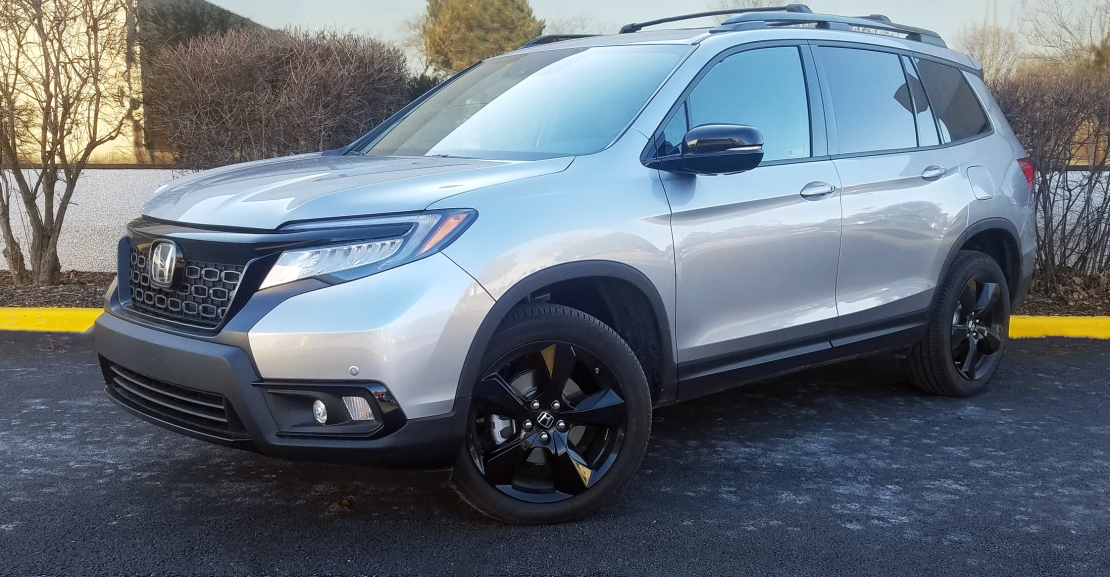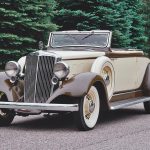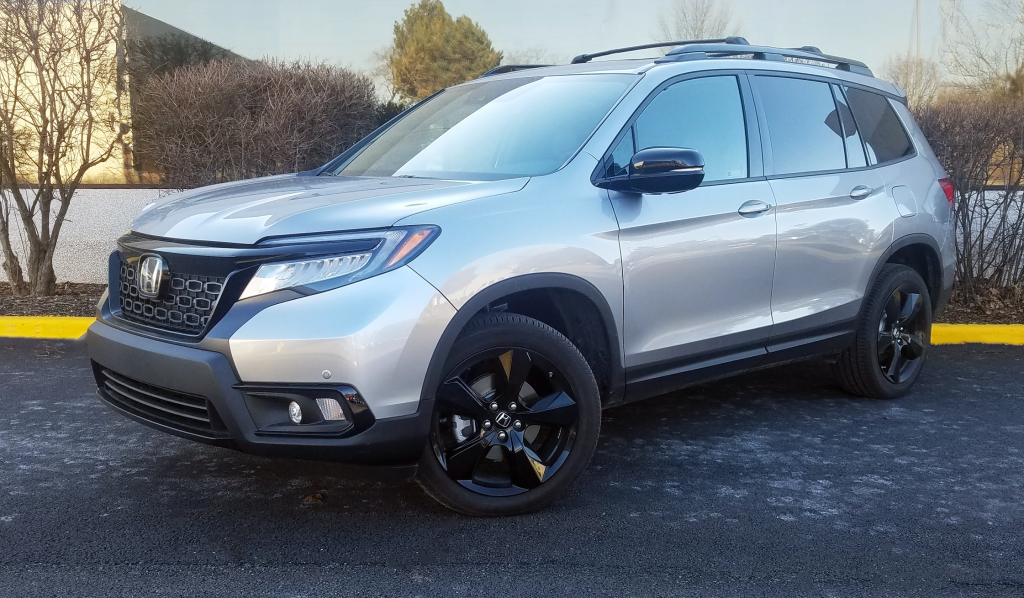
 2019 Honda Passport AWD Elite
2019 Honda Passport AWD Elite
Class: Midsize Crossover
Miles Driven: 295
Fuel Used: 19.5 gallons
| CG Report Card | |
|---|---|
| Room and Comfort | A |
| Power and Performance | B+ |
| Fit and Finish | B+ |
| Fuel Economy | B |
| Value | A- |
| Report-card grades are derived from a consensus of test-driver evaluations. All grades are versus other vehicles in the same class. Value grade is for specific trim level evaluated, and may not reflect Consumer Guide's impressions of the entire model lineup. | |
| Big & Tall Comfort | |
| Big Guy | A |
| Tall Guy | A |
| Big & Tall comfort ratings are for front seats only. "Big" rating based on male tester weighing approximately 350 pounds, "Tall" rating based on 6'6"-tall male tester. | |
| Drivetrain | |
| Engine Specs | 280-hp 3.5L |
| Engine Type | V6 |
| Transmission | 9-speed automatic |
| Drive Wheels | All-wheel drive |
Real-world fuel economy: 19.5 mpg
Driving mix: 80% city, 20% highway
EPA-estimated fuel economy: 19/24/21 (city/highway/combined)
Fuel type: Regular gasoline
Base price: $43,680 (not including $1045 destination charge)
Options on test car: None
Price as tested: $44,725
Quick Hits
The great: Nearly all of the utility of the Honda Pilot at a lower price, save for 3rd-row seating
The good: Dynamically more engaging than most midsize crossovers
The not so good: Monotone cabin “feels” more upscale than it looks
More Passport price and availability information
John Biel
Walking into a Honda showroom in 2019 can feel like a stroll down Memory Lane. Look, over there: an Insight hybrid, the first one of those in five years. And what’s this—a Passport? The last time you saw one you owned a flip phone.
Honda is slapping the Passport badge on a sport-utility vehicle for the first time since 2002. The new one is a “small” midsize SUV with two rows of seating that is intended to complement the “big” midsize 3-row Pilot. Indeed, both share a platform and a 111-inch wheelbase, but the Passport is 6.2 inches shorter end to end, and the Pilot’s third-row seat is deleted in exchange for cargo room and flexibility.
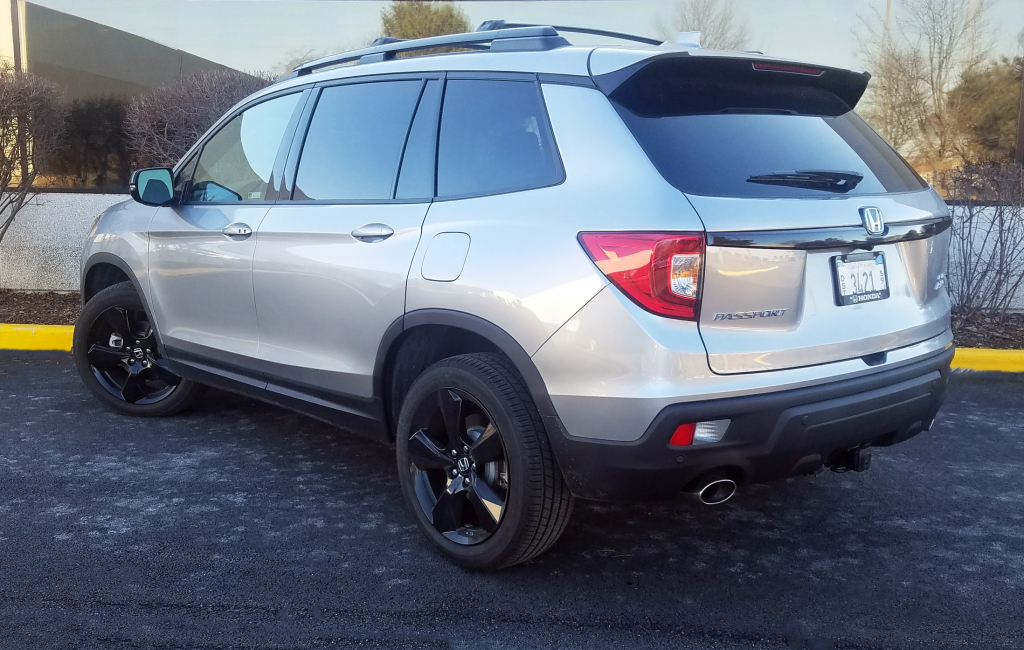
In terms of ride height, arrival/departure angles, and outright appearance, Honda is pitching the Passport as the more-suitable choice as an off-road vehicle. However, powerteam, control layout, and 2-row passenger space betray the close kinship of the two vehicle lines.
The Passport doesn’t have as many trim levels as the Pilot, but both culminate in an Elite model with standard all-wheel drive. (All lower-trim models in both product lines entertain a choice of front- or all-wheel drive.) Consumer Guide’s Passport tester was a Lunar Silver Metallic Elite with a base starting price of $44,725 including delivery—or $4290 less than a Pilot Elite.
First Spin: 2019 Honda Passport
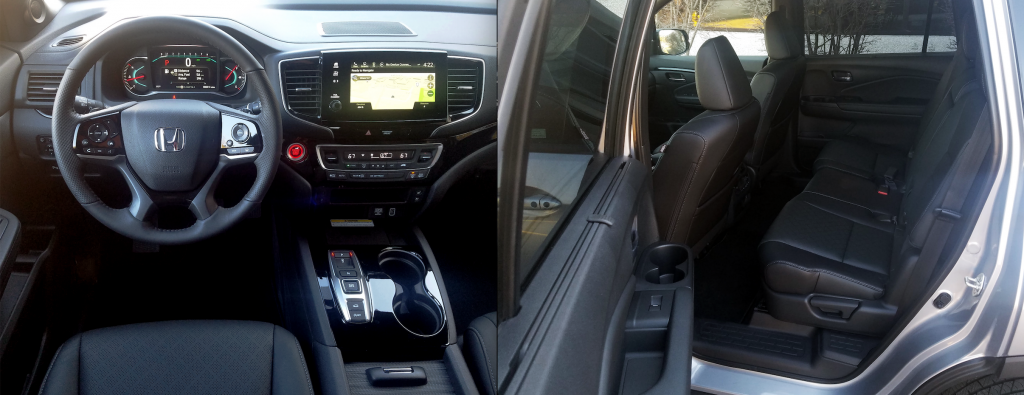
Both of these Honda SUVs accept loads on a broad, flat cargo floor that loads at bumper height—though the liftover necessary to clear the bumper is on the high side. Naturally, the 3-row Pilot has just a little bit of cargo room available when all seats are in use, but that’s never a problem in the Passport. More than 50 cubic feet are available behind the latter’s second-row seats; retract the 60/40-split seat backs and capacity on the load floor exceeds 100 cubic feet, the manufacturer says. That’s not bad considering a longer Pilot with second- and third-row seats down is said to have 109 cubic feet. Better yet for the Passport, sans third seat it has room for ample organized storage under the load platform.
The rear seats fold flush with the cargo floor, albeit with a gap where the seat backs pivot. Release buttons built into the sides of the cargo area make it easy to retract the seats. Open bins at the rear corners will hold incidentals, and flip-up cargo hooks are built into the floor. A hands-free power tailgate is standard in the Elite.
Test Drive: 2019 Honda Pilot Elite
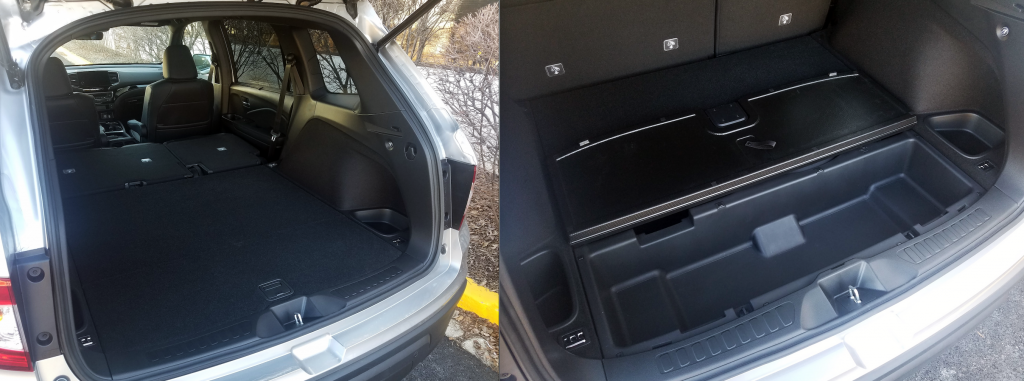
Passport power comes from the pairing of a 3.5-liter V6 and a 9-speed automatic transmission. The engine, rated at 280 horsepower, gets around alertly in street driving and cruises smoothly and fairly quietly in expressway operation. Sometimes, though, it behaves this way in spite of the transmission, which can be a little slow to kick down when bursts of speed are needed—and didn’t always make smooth shifts even in lower-stress situations. EPA fuel-economy projections are 19 mpg in the city, 24 mpg on the highway, and 21 combined. This driver’s 181-mile stint resulted in 20.4 mpg with 70 percent city-type driving—so not bad, especially considering that he didn’t use the “Econ” setting that damps power delivery to save fuel. There is an automatic stop/start system that is quite subtle.
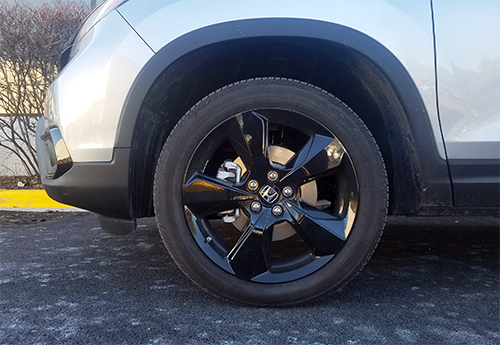
For ride, the test Passport handled city streets quite well, considering their condition by late winter can be pretty well chopped up. The AWD system incorporates “Intelligent Traction Management” that matches power delivery to the wheels to surface conditions. “Normal,” “Snow,” “Mud,” and “Sand” modes are available. The inch or so the Passport gains in ride height is not enough to make it tippy or wobbly, though there is some lean in cornering. However, the trimmer exterior dimensions make it a little more maneuverable than a Pilot.
There’s a good helping of leg- and headroom in both seating rows, and passengers enjoy supportive, comfortable seats. The cabin feels wide for a vehicle of its size class, and a nearly flat floor makes it possible for a third adult to occupy the middle of the rear seat. Driver vision is good to just about any point. The overall look is fairly monotone, but at least materials have an upscale feel in the Elite. Tops of the rear doors are textured plastic with no underlying give, but there are still plenty of soft surfaces on which an arm or elbow can rest. The seats and steering-wheel rim are clad in leather.
Legible driving instruments are clustered in a colorful and artful display. Honda’s in-dash touchscreen has been made easier to use for 2019 due to a new external power/volume knob that replaces the previous virtual “slider.” Climate controls use flippers or repetitive-push buttons, even for temperature, which would be more convenient to set with twist knobs. The selector for the transmission is a strip of buttons and a flip-up lever set in the console—something certain to unnerve Honda newcomers for a little bit. The best features for personal-item storage are the exceedingly spacious console box with an adjustable tray, and the front-door panels that incorporate a tray under each armrest and a long pocket at the bottom. Eight cup holders are deployed about the cabin.
Leading standard-equipment features start with the Honda Sensing safety monitors (collision warning and mitigation, road-departure mitigation, adaptive cruise control, lane-keep assist, traffic-sign recognition, blind-spot alert, rear cross-traffic alert, and automatic high-beam headlights). Also included are 20-inch alloy wheels, 4G-LTE Wi-Fi hotspot capability, wireless smartphone charging, LED external lighting, heated and ventilated front seats, heated rear seats, heated steering wheel, power moonroof, Apple CarPlay/Android Auto smartphone compatibility, keyless entry and starting, a 10-speaker premium audio system with HD and satellite radio, and navigation.
In the end it’s only the nameplates that are nostalgic. There’s been an undeniable march of technological progress since the Passport and Insight last mingled at Honda dealerships. Man, that was so long ago that Tom Brady was playing quarterback for the Patriots. . . .
Test Drive: 2019 Hyundai Santa Fe Ultimate
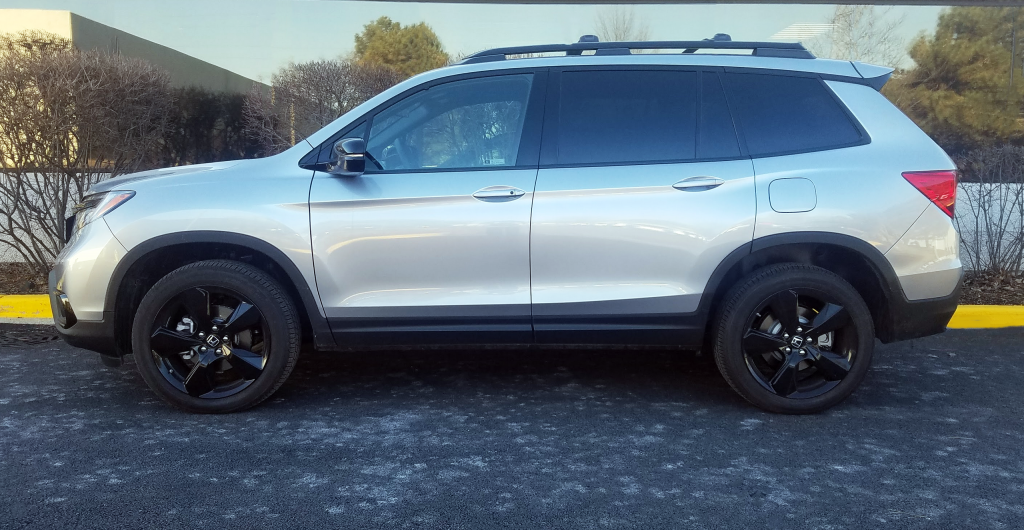
First Spin: 2019 Chevrolet Blazer
Honda Passport Elite

